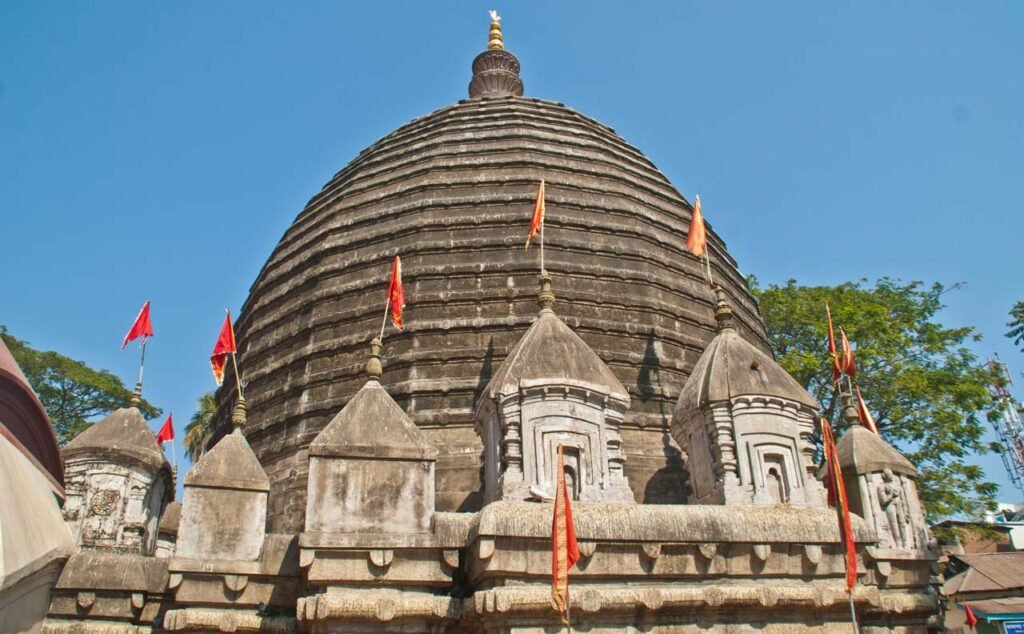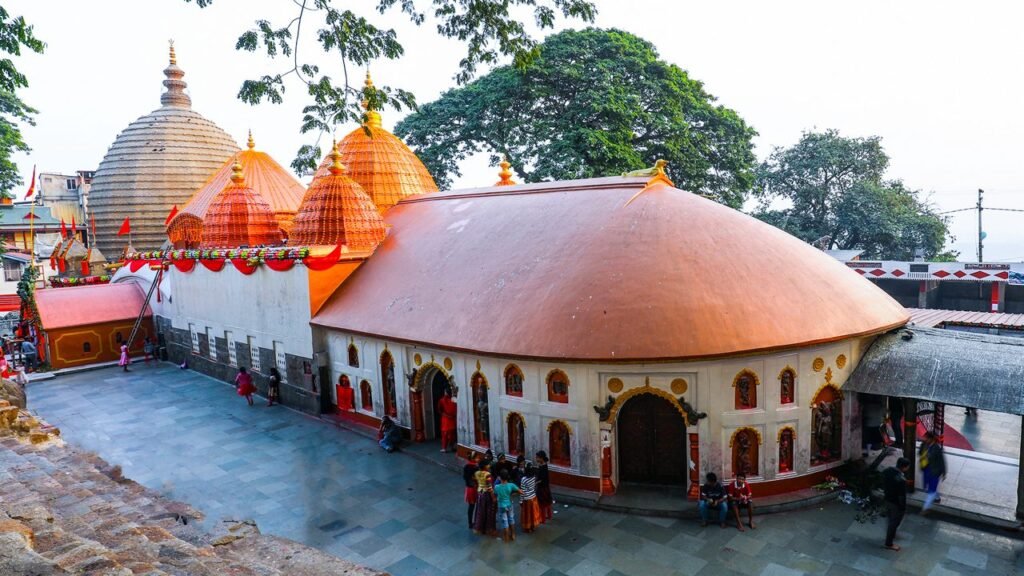The Kamakhya Temple stands as one of India’s most sacred, mysterious, and visited Hindu shrines, perched on the Nilachal Hill in Guwahati, Assam. Revered for its Tantric rituals, deep-rooted legends, and annual festivals, Kamakhya blends history, myth, spirituality, and a pulsating influx of pilgrims and tourists.
Origin and Mythology
Kamakhya Temple is regarded as the oldest and most significant Shakti Peetha among the 51 in India. According to Hindu mythology, it is believed to be the site where the yoni (womb) of Goddess Sati, the first wife of Shiva, fell to earth after her self-immolation and the subsequent dance of devastation by Lord Shiva. This event established Kamakhya as a divine source of feminine power and fertility. Its origins can be traced to both pre-Aryan tribal worship and Vedic traditions, a testimony to its timeless importance in Indian spirituality.
Key Details:
Historical Evolution
The earliest mentions of Kamakhya appear in ancient scriptures like the Kalika Purana and Yogini Tantra, highlighting its significance long before the Aryan influence. The temple is believed to have been constructed and destroyed multiple times over millennia. Notably, under the Koch dynasty led by King Naranarayana in the 16th century, Kamakhya was rebuilt using unique beehive-style architecture, blending local Nilachal and Bengali styles. The later Ahom dynasty further expanded and beautified the temple, integrating it as a vibrant center of Shaivism and Shaktism.
Throughout its existence, Kamakhya Temple has weathered invasions, especially by Kala Pahar in the 16th century, and seen phases of obscurity before emerging as a premier pilgrimage site under British colonial rule in Assam.
Location & Visiting Route
Kamakhya Temple is located approximately 7 kilometers from the heart of Guwahati city, on Nilachal Hill, overlooking the Brahmaputra River. Travelers can reach the temple easily from:
- By Air: Lokpriya Gopinath Bordoloi International Airport (20 km away), with taxi and cab services to the site.
- By Train: Guwahati Railway Station (8 km) and Kamakhya Railway Station (6.8 km) provide robust connectivity across India.
- By Road: Guwahati is well-connected via highways; local buses, taxis, and auto-rickshaws ferry pilgrims year-round.
- By River: Ferries offer scenic routes along the Brahmaputra River, especially appealing for combining visits with the Umananda Temple on Peacock Island.
Accommodation options range from budget lodges and guesthouses to luxury hotels, primarily clustered near Paltan Bazaar, Uzan Bazaar, and the temple complex itself. Dharamshalas managed by the temple trust suit pilgrims seeking affordable, basic lodgings.
Unique Rituals and Festivals
Kamakhya Temple’s rituals draw heavily from Tantric practices. The temple’s core chamber is a subterranean sanctum housing the sacred yoni-shaped stone, perpetually soaked by a natural spring. Worship here focuses on the creative feminine force, and the temple remains a leading site for Tantrik sadhanas in India.
Ambubachi Mela
This annual festival is the biggest attraction, drawing millions of devotees and Tantric practitioners. Celebrated in June, the Ambubachi Mela marks the goddess’s menstruation and the renewal of fertility on earth. The temple remains closed for three days, signifying the goddess’s period, before reopening for a grand celebration, when devotees flock for “darshan.” This event is so influential it sparks a massive surge in tourism, revenue, and media coverage each year.
Daily Rituals and Other Festivals
Numerous rituals and festivals, including Durga Puja, Vasanti Puja, and Manasa Puja, bring vibrancy to Kamakhya throughout the year. Daily aartis draw large crowds, and the offering of blessed prasad is a central tradition. The temple also serves as the spiritual heart of local life and customs.
Architectural Splendor
The temple’s design is a stunning blend of the indigenous Nilachal style and classical Indian forms. It comprises three principal chambers:
- A rectangular western hall for worship.
- A square-shaped middle chamber adorned with inscriptions.
- The innermost sanctum, a cave with the legendary yoni stone.
The temple complex houses additional shrines devoted to tantric forms of Shakti, Shiva, and Vishnu, making it an expansive spiritual landscape.

Cultural Significance
Kamakhya is a center of faith for millions, especially women seeking blessings for fertility and family life. As the symbolic seat of Shakti, Kamakhya has played a vital role in spreading Tantrik Shakta traditions across India. The temple’s connection to tribal, Tantric, and classical Hindu beliefs makes it a crucible for syncretism, preserving rituals and philosophies seldom observed elsewhere.
Tourist Experience
Kamakhya Temple promises an immersive experience combining spirituality, architectural wonder, and nature’s beauty. Popular activities include:
- Attending the Ambubachi Mela.
- Observing daily aartis and rituals.
- Trekking Nilachal Hill.
- Exploring the lush temple complex.
- Visiting nearby attractions like Umananda Temple, Bhubaneswari Temple, and the Assam State Museum.
Best times to visit are October–March (pleasant weather) and June (Ambubachi Mela), though expect large crowds during key festivals.
Revenue and Economic Impact
Kamakhya Temple remains a powerhouse for Assam’s tourism and religious economy:
- Annual visitors exceed 15 million.
- Donations and offerings alone range between ₹50–80 crore yearly.
- Ancillary revenues for local businesses, shops, and logistics providers approach ₹800 crore annually.
- The Ambubachi Mela alone accounts for a significant spike in these figures, underscoring the temple’s pivotal economic role.
Even during adverse events like pandemics or natural disasters, temple management ensures continuous support for priests and staff via collected funds.
Kamakhya Temple in Recent News
In 2025, Kamakhya Temple again made headlines when it reopened after the Ambubachi Mela, with thousands of devotees flocking for blessings. The Ambubachi continues to attract national attention and showcases the seamless blend of devotion, tradition, and tourism management that the temple excels at
FAQs About Kamakhya Temple
What is the significance of Kamakhya Temple?
The temple is the oldest and most revered Shakti Peetha, believed to house the yoni (womb) of Goddess Sati, making it a symbol of feminine power, fertility, and Tantric worship.
When is the best time to visit Kamakhya Temple?
While the temple is open throughout the year, the Ambubachi Mela in June and the pleasant months from October to March are ideal for visits.
How can one reach Kamakhya Temple?
Kamakhya is accessible by air (Guwahati Airport), train (Guwahati or Kamakhya Stations), and road (cabs, buses, autos from anywhere in Guwahati).
What are the major festivals celebrated?
Ambubachi Mela, Durga Puja, Vasanti Puja, and Manasa Puja are key festivals, with Ambubachi being the most famous for its scale and spiritual fervor.
What are the accommodation options nearby?
Choices range from budget guesthouses and dharamshalas run by the temple trust to high-end hotels in Guwahati, many offering panoramic views of the Brahmaputra.
How does the temple contribute to Assam’s economy?
With 1.5 crore annual visitors, Kamakhya generates ₹50–80 crore in donations and over ₹800 crore for the local economy, especially during festivals.
Are there any age or gender restrictions?
The temple is open to all devotees regardless of age or gender, reinforcing its status as a site celebrating universal creative power.
What are the important rituals at Kamakhya?
Key rituals include morning snana (bathing), daily aartis, prasad offerings, Tantrik practices, and the unique Ambubachi festival representing the goddess’s fertility cycle.
Is photography allowed inside the temple?
Photography is generally not permitted in the sanctum, but visitors can take photos in the temple’s outer areas. Always respect local regulations and sentiments.
What are some nearby places to visit?
Tourists can explore Umananda Temple on Peacock Island, Bhubaneswari Temple, Assam State Museum, and enjoy boat rides on the Brahmaputra.
